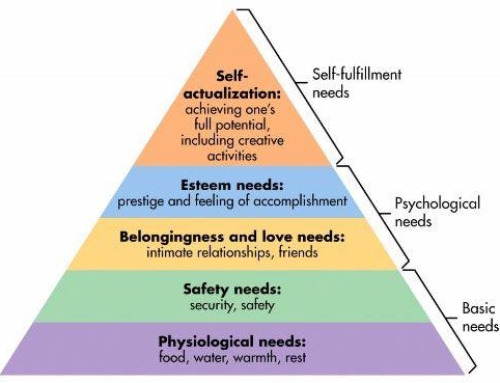What Is Personal Finance?
Personal finance is a term that covers managing your money and saving and investing. It encompasses budgeting, banking, insurance, mortgages, investments, retirement planning, and tax and estate planning. It often refers to the entire industry that provides financial services to individuals and households and advises them about financial and investment opportunities.
Personal Finance Explained
Personal finance is about meeting personal financial goals, whether it’s having enough for short-term financial needs, planning for retirement, or saving for your child’s college education. It all depends on your income, expenses, living requirements, and individual goals and desires—and coming up with a plan to fulfill those needs within your financial constraints. But to make the most of your income and savings it’s important to become financially literate, so you can distinguish between good and bad advice and make savvy decisions.
KEY TAKEAWAYS
- Few schools have courses in how to manage your money, so it is important to learn the basics through free online articles, courses, and blogs; podcasts; or at the library.
- Smart personal finance involves developing strategies that include budgeting, creating an emergency fund, paying off debt, using credit cards wisely, saving for retirement, and more.
- Being disciplined is important, but it’s also good to know when to break the rules—for example, young adults who are told to invest 10% to 20% of their income for retirement may need to take some of those funds to buy a home or pay off debt instead.
10 Personal Finance Strategies
The sooner you start financial planning the better, but it’s never too late to create financial goals to give yourself and your family financial security and freedom. Here are the best practices and tips for personal finance:
1. Devise a Budget
A budget is essential to living within your means and saving enough to meet your long-term goals. The 50/30/20 budgeting method offers a great framework. It breaks down like this:
- 50% of your take-home pay or net income (after taxes, that is) goes toward living essentials, such as rent, utilities, groceries, and transport
- 30% is allocated to lifestyle expenses, such as dining out and shopping for clothes.
- 20% goes towards the future: paying down debt and saving both for retirement and for emergencies
It’s never been easier to manage money, thanks to a growing number of personal budgeting apps for smartphones that put day-to-day finances in the palm of your hand. Here are just two examples: YNAB, aka You Need a Budget, helps you track and adjust your spending so that you are in control of every dollar you spend. Meanwhile, Mint streamlines cash flow, budgets, credit cards, bills, and investment tracking—all from one place. It automatically updates and categorizes your financial data as info comes in, so you always know where you stand financially. The app will even dish out custom tips and advice.
2. Create an Emergency Fund
It’s important to “pay yourself first” to ensure money is set aside for unexpected expenses such as medical bills, a big car repair, rent if you get laid off, and more.
Between three and six months’ worth of living expenses is the ideal safety net. Financial experts generally recommend putting away 20% of each paycheck every month (which of course, you’ve already budgeted for!). Once you’ve filled up your “rainy day” fund (for emergencies or sudden unemployment), don’t stop. Continue funneling the monthly 20% towards other financial goals such as a retirement fund.
3. Limit Debt
It sounds simple enough: To keep debt from getting out of hand, don’t spend more than you earn. Of course, most people do have to borrow from time to time—and sometimes going into debt can be advantageous, if it leads to acquiring an asset. Taking out a mortgage to buy a house is one good example. But leasing can sometimes be more economical than buying outright, whether you’re renting a property, leasing a car, or even getting a subscription to computer software.
4. Use Credit Cards Wisely
Credit cards can be major debt traps. But it’s unrealistic not to own any in the contemporary world, and they have applications other than as a tool to buy things. Not only are they crucial to establishing your credit rating, but they’re also a great way to track spending, which can be a big budgeting aid.
Credit just needs to be managed correctly, which means the balance should ideally be paid off every month, or at least be kept at a credit utilization rate minimum (that is, keep your account balances below 30% of your total available credit). Given the extraordinary rewards incentives on offer these days (such as cash back), it makes sense to charge as many purchases as possible. Still, avoid maxing out credit cards at all costs, and always pay bills on time. One of the fastest ways to ruin your credit score is to constantly pay bills late—or even worse, miss payments. (See Tip No. 5.)
Using a debit card is another way to ensure you will not be paying for accumulated small purchases over an extended period—with interest.
5. Monitor Your Credit Score
Credit cards are the main vehicle through which your credit score is built and maintained, so watching credit spending goes hand in hand with monitoring your credit score. If you ever want to obtain a lease, mortgage, or any other type of financing, you’ll need a solid credit history behind you. Factors that determine your score include how long you’ve had credit, your payment history, and your credit-to-debt ratio.
Credit scores are calculated between 300 and 850. Here’s one rough way to look at it:
- 720 = good credit
- 650 = average credit
- 600 or less = poor credit
To pay bills, set up direct debiting where possible (so you never miss a payment) and subscribe to reporting agencies that provide regular credit score updates. By monitoring your report, you will be able to detect and address mistakes or fraudulent activity. Federal law allows you to obtain free credit reports from the three major credit bureaus: Equifax, Experian, and TransUnion. Reports can be obtained directly from each agency, or you can sign up at AnnualCreditReport, a site sponsored by the Big Three; you can also get a free credit score from sites such as Credit Karma, Credit Sesame, or Wallet Hub. Some credit card providers, such as Capital One, will provide customers with complimentary, regular credit score updates, too.
6. Consider Your Family
To protect the assets in your estate and ensure that your wishes are followed when you die, be sure you make a will and—depending on your needs—possibly set up one or more trusts. You also need to look into insurance: not just on your major possessions (auto, homeowners), but also on your life. And be sure to periodically review your policy to make sure it meets your family’s needs through life’s major milestones.
Other critical documents include a living will and healthcare power of attorney. While not all these documents directly affect you, all of them can save your next-of-kin considerable time and expense when you fall ill or become otherwise incapacitated.
And while they’re young, take the time to teach your children about the value of money and how to save, invest, and spend wisely.
7. Pay Off Student Loans
There are myriad of loan-repayment plans and payment reduction strategies available to graduates. If you’re stuck with a high-interest rate, paying off the principal faster can make sense. On the other hand, minimizing repayments (to interest only, for instance), can free up other income to invest elsewhere or to put into retirement savings while you’re young and will get the maximum benefit from compound interest (see Tip No. 8, below). Some federal and private loans are even eligible for a rate reduction if the borrower enrolls in auto pay. Flexible federal repayment programs worth checking out include:
- Graduated repayment—progressively increases the monthly payment over 10 years
- Extended repayment—stretches the loan out over a period that can be as long as 25 years
8. Plan (and Save) for Retirement
Retirement may seem like a lifetime away, but it arrives much sooner than you’d expect. Experts suggest that most people will need about 80% of their current salary in retirement. The younger you start, the more you benefit from what advisors like to call the magic of compounding interest—how small amounts grow over time. Setting aside money now for your retirement not only allows it to grow over the long term, but it can also reduce your current income taxes if funds are placed in a tax-advantaged plan fund like an Individual Retirement Account (IRA), a 401(k) or a 403(b). If your employer offers a 401(k) or 403(b) plan, start paying into it right away, especially if they match your contribution. By not doing so, you’re giving up free money! Take time to learn the difference between a Roth 401(k) and a traditional 401(k), if your company offers both.
Investing is only one part of planning for retirement. Other strategies include waiting as long as possible before opting to receive Social Security benefits (which is smart for most people), and converting a term life insurance policy to a permanent life one.
9. Maximize Tax Breaks
Due to an overly complex tax code, many individuals leave hundreds or even thousands of dollars sitting on the table every year. By maximizing your tax savings, you’ll free up money that can be invested in the reduction of past debts, your enjoyment of the present and your plans for the future.
You need to start each year saving receipts and tracking expenditures for all possible tax deductions and tax credits. Many business supply stores sell helpful “tax organizers” that have the main categories already pre-labeled. After you’re organized, you’ll then want to focus on taking advantage of every tax deduction and credit available, as well as for deciding between the two when necessary. In short, a tax deduction reduces the amount of income you are taxed on, whereas a tax credit actually reduces the amount of tax you owe. This means that a $1,000 tax credit will save you much more than a $1,000 deduction.
10. Give Yourself a Break
Budgeting and planning can seem full of deprivations. Make sure you reward yourself now and then. Whether it’s a vacation, purchase, or an occasional night on the town, you need to enjoy the fruits of your labor. Doing so gives you a taste of the financial independence you’re working so hard for.
Last but not least, don’t forget to delegate when needed. Even though you might be competent enough to do your own taxes or manage a portfolio of individual stocks, it doesn’t mean you should. Setting up an account at a brokerage, spending a few hundred dollars on a certified public accountant (CPA) or a financial planner—at least once—might be a good way to jump-start your planning.
Personal Finance Principles
Once you’ve established some fundamental procedures, you can start thinking about philosophy. The key to getting your finances on the right track isn’t about learning a new set of skills. Rather, it’s about learning that the principles that contribute to success in business and your career work just as well in personal money management. The three key principles are prioritization, assessment, and restraint.
Prioritizing means that you’re able to look at your finances, discern what keeps the money flowing in, and make sure you stay focused on those efforts.
Assessment is the key skill that keeps professionals from spreading themselves too thin. Ambitious individuals always have a list of ideas about other ways they can hit it big, whether it is a side business or an investment idea. While there is absolutely a place and time for taking a flyer, running your finances like a business means stepping back and truly assessing the potential costs and benefits of any new venture.
Restraint is that final big-picture skill of successful business management that must be applied to personal finances. Time and time again, financial planners sit down with successful people who somehow still manage to spend more than they make. Earning $250,000 per year won’t do you much good if you spend $275,000 annually. Learning to restrain spending on non-wealth-building assets until after you’ve met your monthly savings or debt-reduction goals is crucial in building net worth.
Learn About Personal Finance
Few schools offer courses in managing your money, which means most of us will need to get our personal finance education from our parents (if we’re lucky) or pick it up ourselves. Fortunately, you don’t have to spend much money to find out how to better manage it. You can learn everything you need to know for free online and in library books. Almost all media publications regularly dole out personal finance advice, too.
Personal Finance Education Online
A great way to start learning about personal finance is to read personal finance blogs. Instead of the general advice, you’ll get in personal finance articles, you’ll learn exactly what challenges real people are facing and how they are addressing those challenges.
Mr. Money Mustache has hundreds of posts full of irreverent insights on how to escape the rat race and retire extremely early by making unconventional lifestyle choices. CentSai helps you navigate myriad of financial decisions via first-person accounts. And The Points Guy and Million Mile Secrets teach you how to travel for a fraction of the retail price by using credit card rewards, and FareCompare helps you find the best deals on flights. These sites often link to other blogs, so you’ll discover more sites as you read.
Of course, we can’t help tooting our own horn in this category. Investopedia offers a wealth of free personal finance education. You might start with our tutorials on budgeting, buying a home, and planning for retirement—or the thousands of other articles in our personal finance section.
Personal Finance Education Through the Library
You may need to visit your library in person to get a library card, but after that, you can check out personal finance audiobooks and eBooks online without leaving home. Some of these bestsellers may be available from your local library: “I Will Teach You to Be Rich,” “The Millionaire Next Door,” “Your Money or Your Life,” and “Rich Dad Poor Dad.” Personal finance classics like “Personal Finance for Dummies,” “The Total Money Makeover,” “The Little Book of Common Sense Investing,” and “Think and Grow Rich” are also available as audio books.
Free Online Personal Finance Classes
If you enjoy the structure of lessons and quizzes, try one of these free digital personal finance courses:
- Morningstar’s Investing Classroom offers a place for beginning and experienced investors alike to learn about stocks, funds, bonds, and portfolios. Some of the courses you’ll find there include “Stocks Versus Other Investments,” “Methods for Investing in Mutual Funds,” “Determining Your Asset Mix,” and “Introduction to Government Bonds.” Each course takes about 10 minutes and is followed by a quiz to help you make sure you understood the lesson.
- EdX, an online learning platform created by Harvard University and MIT, offers at least three courses that cover personal finance: How to Save Money: Making Smart Financial Decisions from the University of California at Berkeley, Finance for Everyone from the University of Michigan, and Personal Finance from Purdue University. These courses will teach you things like how credit works, which types of insurance you might want to carry, how to maximize your retirement savings, how to read your credit report, and what the time value of money is.
- Purdue also has an online course on Planning for a Secure Retirement. It’s broken up into 10 main modules, and each has four to six sub-modules on topics such as Social Security, 401(k) and 403(b) plans, and IRAs. You’ll learn about your risk tolerance, think about what kind of retirement lifestyle you want, and estimate your retirement expenses.
- Missouri State University presents a free online video course on personal finance through iTunes. This basic course is good for beginners who want to learn about personal financial statements and budgets, how to use consumer credit wisely, and how to make decisions about cars and housing.
Personal Finance Podcasts
Personal finance podcasts are a great way to learn how to manage your money if you’re short on free time. While you’re getting ready in the morning, exercising, driving to work, running errands, or getting ready for bed, you can listen to expert advice on becoming more financially secure.
The Dave Ramsey Show is a call-in program that you can listen to anytime through your favorite podcast app. You’ll learn about the financial problems real people are facing and how a multimillionaire who was once broke himself recommends solving them. NPR’s Planet Money and Freakonomics Radio make economics interesting by using it to explain real-world phenomena such as “how we got from mealy, nasty apples to apples that actually taste delicious,” the Wells Fargo faux-accounts scandal, and whether we should still be using cash. American Public Media’s Marketplace helps make sense of what’s going on in the business world and the economy. And So Money with Farnoosh Torabi combines interviews with successful business people, expert advice, and listeners’ personal finance questions.
The most important thing is to find resources that work for your learning style and that you find interesting and engaging. If one blog, book, course, or podcast is dull or difficult to understand, keep trying until you find something that clicks.
And education shouldn’t stop once you learn the basics. The economy changes and new financial tools, like those budgeting apps, are always being developed. Find resources you enjoy and trust, and keep refining your money skills from now to retirement and even after it.
Things Classes Can’t Teach You
Personal finance education is a great idea for consumers, especially youthful ones, who need to understand investing basics or credit management. However, understanding the basic concepts is not a guaranteed path to fiscal sense. Human nature can often derail the best of intentions aimed at achieving a perfect credit score or building a substantial retirement nest egg. These three key character traits can help you stay on track:
Discipline
One of the most important tenets of personal finance is systematic saving. Say your net earnings are $60,000 per year and your monthly living expenses—housing, food, transportation, and the like—amount to $3,200 per month. There are choices to make surrounding your remaining $1,800 in monthly salary. Ideally, the first step is to establish an emergency fund, or perhaps tax-advantaged health savings account (HSA)—to be eligible for one, your health insurance must be a high-deductible health plan (HDHP)—to meet out-of-pocket medical expenses. Let’s say that you’ve developed a penchant for designer clothes, and weekends at the beach beckon. The discipline required to save rather than spend could keep you from taking this important step and saving the 10% to 15% of gross income that could have been stashed in a money market for short-term needs.
Then, there’s investing discipline; it’s just for thick-skinned institutional money managers who make their living buying and selling stocks. The average investor would do well to set a target on profit-taking and abide by it. As an example, imagine that you bought Apple Inc. stock in February 2016 at $93 and vowed to sell when it crossed $110, as it did two months later. But you didn’t; you ended up exited the position in July 2016, at $97, giving up gains of $13 per share and the possible opportunity for profit from another investment.
A Sense of Timing
Three years out of college, the emergency fund has been established and it is time to reward yourself. A jet ski costs $3,000. Investing in growth stocks can wait another year, you think; there is plenty of time to launch an investment portfolio, right? Putting off investing for one year, however, can have significant consequences. The opportunity cost of buying the watercraft can be illustrated through the time value of money. The $3,000 used to buy the jet ski would have amounted to nearly $49,000 in 40 years at 7% interest, a reasonable average annual return for a growth mutual fund over the long haul. Thus, delaying the decision to invest wisely may likewise delay the ability to retire at age 62, as you would like.
Doing tomorrow what you could do today also extends to debt payment. A $3,000 credit card balance takes 222 months to retire if the minimum payment of $75 is made each month. And don’t forget the interest you’re paying: at an 18% APR, it comes to $3,923 over those months. Plunking down $3,000 to erase the balance in the current month offers substantial savings—about the same as the cost of the jet ski.
Emotional Detachment
Personal finance matters are business, and business should not be personal. A difficult but necessary facet of sound financial decision-making involves removing the emotion from a transaction. Making impulsive purchases or loans to family members feels good but can greatly impact long-term investment goals. Your cousin who has burned your brother and sister will likely not pay you back either—so the smart answer is to decline his requests for help. Sure, sympathy is hard to turn back, but the key to prudent personal financial management is to separate feelings from reason.
Breaking Personal Finance Rules
The personal finance realm may have more guidelines and “smart tips” to follow than any other. Although these rules are good to know about, everyone has individual circumstances. Here are some rules that the prudent, especially young adults, are never supposed to break, but should consider breaking anyway.
Saving or Investing a Set Portion of Your Income
An ideal budget includes saving a small amount of your paycheck every month for retirement—usually around 10% to 20%. While being fiscally responsible is important, and thinking about your future is crucial, the general rule of saving a given amount each period for your retirement may not always be the best choice, especially for young people just getting started in the real world. For one, many young adults and students need to think about paying for the biggest expenses of their lifetime, such as a new car, home, or post-secondary education. Taking away potentially 10% to 20% of available funds would be a definite setback in making those purchases. Additionally, saving for retirement doesn’t make a whole lot of sense if you have credit cards or interest-bearing loans that need to be paid off. The 19% interest rate on your Visa would probably negate the returns you get from your balanced mutual fund retirement portfolio, five times over.
Also, saving some money to travel and experience new places and cultures can especially rewarding for a young person who’s still not sure about their path in life.
Long-Term Investing/Investing in Riskier Assets
The rule of thumb for young investors is that they should have a long-term outlook and stick to a buy-and-hold philosophy. This rule is one of the easier ones to justify breaking. Being able to adapt to changing markets can be the difference between making money, or limiting your losses, compared to sitting idly by and watching as your hard-earned savings shrink. Short-term investing has its advantages at any age.
Now, if you’re no longer married to the idea of long-term investing, you can stick to safer investments, as well. The logic was since young investors have such a long investment time horizon, they should be investing in higher risk ventures since they have the rest of their lives to recover from any losses they may suffer. However, if you don’t want to take on undue risk in your short- to medium-term investments, you don’t have to. The idea of diversification is an important part of creating a strong investment portfolio; this includes both the riskiness of individual stocks and their intended investment horizon.
At the other end of the age spectrum, investors near and at retirement are encouraged to cut back to the safest investments, even though these may yield less than inflation, in order to preserve capital. Certainly, it’s important to take fewer risks as your years to earn money and recover from bad financial times shrink. But at age 60 or 65 you could have 20 or even more than 30 years to go. Some growth investments could still make sense for you.
SOURCE: investopedia.com





